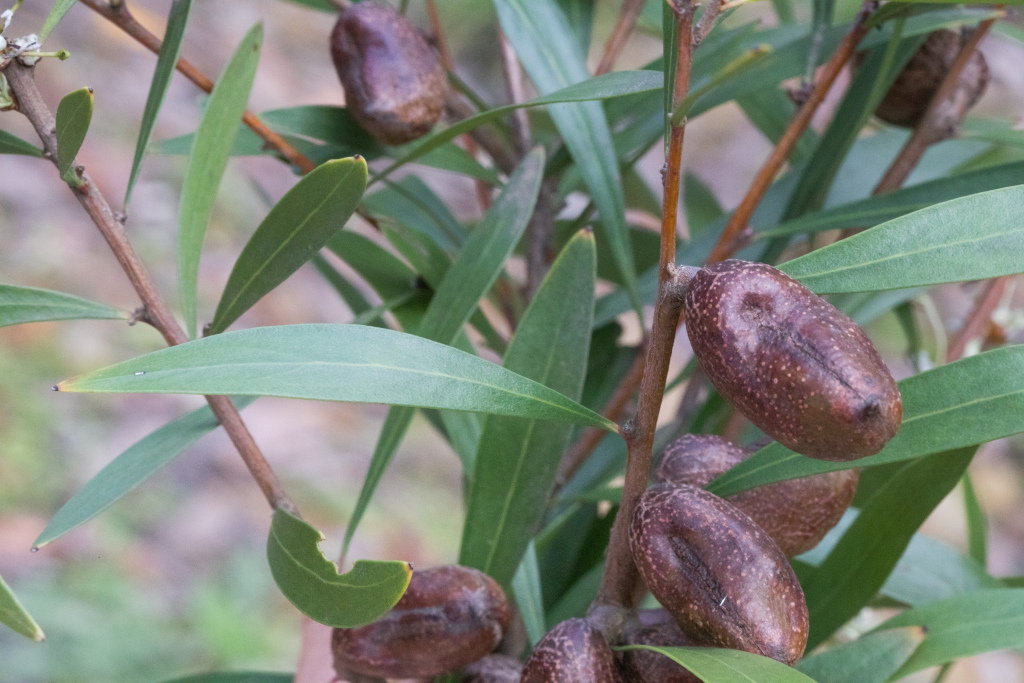Hakea eriantha
R.Br. Tree HakeaSmall tree or dense shrub, 1–9 m high, rarely lignotuberous; branches spreading or weeping; branchlets and young leaves appressed-pubescent, glabrescent. Leaves flat, not twisted at base, linear, narrowly elliptic or obovate, 8–18.5 cm long, (1–)10–20(–30) mm wide, usually widest at or below midpoint, or sometimes above mid-point, primary and secondary venation usually indistinct. Inflorescence 6–12-flowered; pedicel 2.5–6 mm long, densely tomentose; perianth 3.5–7.5 mm long, white, sericeous; pistil 7.0–8.2 mm long; pollen presenter a lateral disc below style apex; gland 0.15–2 mm long. Fruit inserted ± at right-angle to stalk, usually curved upwards towards apex, obovoid, 1.9–3.2 cm long, 1.2–2 cm wide, smooth, brown-warted; horns obscure; seed not occupying whole valve face, obliquely narrowly obovate, 19.5–20.5 mm long; seed-body smooth or unevenly dissected; wing not decurrent, mid brown. Flowers (Jul.–)Aug.–Nov.
VVP, VRiv, MuF, GipP, CVU, GGr, NIS, EGL, EGU, HSF, HNF, MonT, HFE, VAlp. Also Qld, NSW. Scattered through dry to moist lowland to montane forests, mainly east from Maffra, often abundant near rainforest margins.
Specimens from the upper reaches of the Genoa River have leaves which are up to 30 mm wide and broadest toward the apex, cf. the usual width of 10–20 mm with the broadest part usually near the middle or below mid-point. This variant was recently described as Hakea yambulla Molyneux & Forrester (q.v.), which is not considered as being a distinct species here. Another variant with long, narrow-linear leaves to c. 3 mm wide, occurs occasionally within populations of typical plants.
Barker, R.M.; Barker, W.R.; Haegi, L. (1996). Hakea. In: Walsh, N.G.; Entwisle, T.J., Flora of Victoria Vol. 3, Dicotyledons Winteraceae to Myrtaceae, pp. 870–882. Inkata Press, Melbourne.
 Spinning
Spinning


